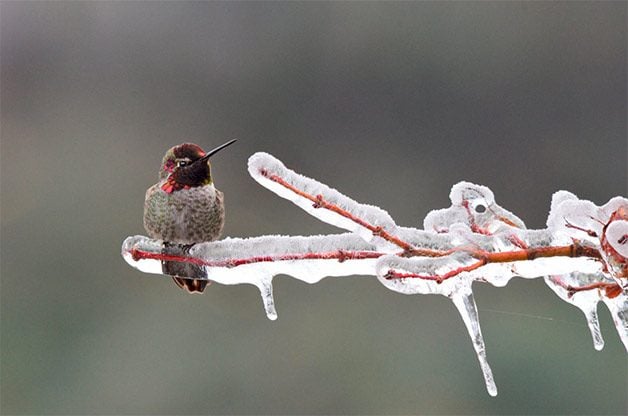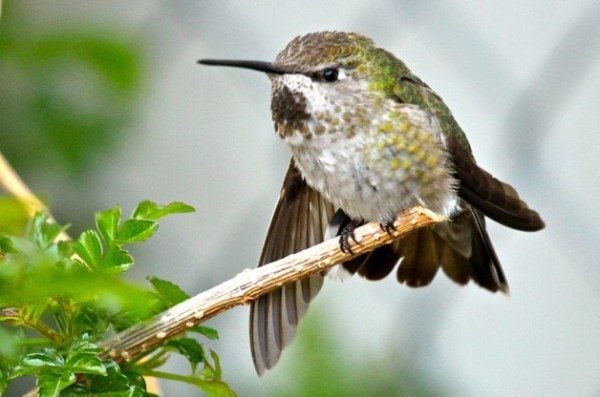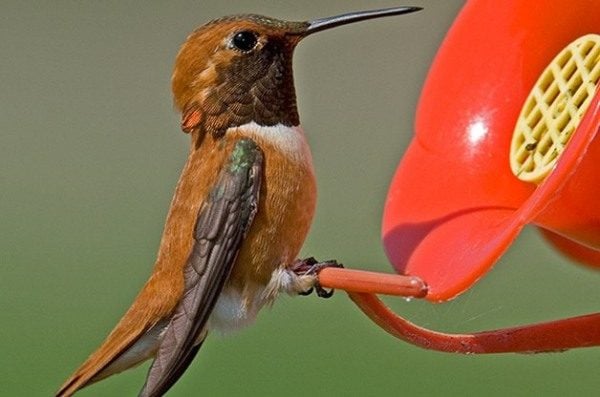Expert Tips to Attract Hummingbirds in Winter
Updated: Jul. 26, 2023

Attracting hummingbirds in winter is possible in some areas of North America. Learn where to see hummingbirds and how to help them in cold weather.
Could any birds say summer more clearly than hummingbirds? Dancing before flowers to sip nectar, flashing and glittering in the light, they seem like tiny sunbeams come to life. The very idea of hummingbirds in winter sounds almost like a contradiction. But some hummingbirds do spend the winter in North America, and in recent years their numbers and range have been increasing.
Feed Anna’s Hummingbirds in Winter

Of course, winter isn’t a harsh season everywhere. In coastal California, where the weather is moderate year-round, Anna’s hummingbirds have always been permanent residents. Historically, they were common from Baja north to the San Francisco Bay region. Around the 1930s, however, they began to spread. By the 1960s they were expanding eastward and beginning to nest in Arizona. At the same time, they pushed north through coastal Oregon and Washington and into southwestern British Columbia. Today you can see male Anna’s hummingbirds flashing their rose-red crowns and singing their scratchy songs in Vancouver. Even on cold days in January!
What made it possible for these hummingbirds to expand their range so dramatically? The short answer is that gardeners did, by feeding hummingbirds well. With well-watered parks and yards boasting hardy plants blooming in every season, we created a landscape that would support more Anna’s hummingbirds year-round than most of their natural habitats. Add in a generous number of sugar-water feeders, and you have a hummer haven for all seasons. Learn more about how hummingbirds survive snow and cold weather.
Look for Western Hummingbirds in the Southeast
A similar story has played out in the Eastern states. But the plot line there is more complicated and involves more different players.
Most kinds of hummingbirds in the U.S. live in the West, especially the Southwest. Originally, the only hummers east of the Great Plains were the familiar little ruby-throats. They were summer birds from the Gulf Coast to southern Canada. But almost all went to southern Mexico or Central America for the winter, with only a handful staying through the season in Florida. But recent decades have seen a virtual explosion in the numbers of Western hummingbirds wandering eastward. This is why you should keep feeders up for late migrating fall hummingbirds.

Leading the charge has been the rufous hummingbird. This copper-colored sprite is among the most numerous Western hummers, spending early summer in Northwestern forests, from Oregon and Montana to the edge of Alaska. In late summer and early fall, most of the population migrates south through mountain meadows of the Rockies, heading for a wintering range in Mexico. But every fall, a few rufous hummingbirds stray east out of the Rockies, winding up in the Southeastern U.S.
Plant a Hardy Hummingbird Garden
In centuries past, such strays probably would not have survived the winter—not unless they corrected their course and headed for Mexico. There simply weren’t enough wildflowers to sustain them through the season. But gardeners have changed that equation, too, by creating habitats made for attracting hummingbirds. Over the last century, legions of plant lovers throughout the South have developed year-round flower beds, using many flowers perfect for feeding hummingbirds. In the process, they have unwittingly changed the landscape to support hummingbirds in winter. Many people in the South now work at developing winter hummingbird gardens, putting up sugar-water feeders and planting any kind of red, tubular flower that will bloom when it’s cool, all in the name of attracting hummingbirds. Here are the top 10 colorful flowers hummingbirds love.
Rufous hummingbirds have now spread through Louisiana, Mississippi, Alabama, Georgia and Florida, with smaller numbers north along the Atlantic Coast to Virginia and beyond. And they seem to have brought their friends along. The calliope hummingbird, America’s tiniest bird at just over 3 inches, is now a regular in winter in the Southeastern states. So are the broad-tailed hummingbird, another bird from the Rockies, and the black-chinned hummingbird, the Western counterpart to the ruby-throat. During some recent seasons, 10 or more different species of hummers have spent winter in the Gulf states.
Knowing that hummers will pause to investigate anything in their favorite color, one Louisiana birder even painted her house red! Most people wouldn’t go this far. But if you live in a climate where it’s possible to keep some flowers blooming during the winter, try planting some hardy nectar sources for hummers. You just might make the joyful discovery that hummingbirds in winter aren’t that uncommon after all.
History of Hummingbirds in Winter
1950s: A few rufous hummingbirds show up in fall in Louisiana and stay through winter.
1970s: As people begin actively feeding hummingbirds, a few more hummingbirds start showing up and staying.
1990s: Dozens of hummingbirds are staying in Louisiana and beyond.
Currently: Hundreds of vagrant hummingbirds will likely winter all over the Southeast, including rufous, calliope and others, drawn by gardens designed with attracting hummingbirds in mind.
